Curd Rice Recipe
Updated: February 27, 2022, By Swasthi
Curd rice is a South Indian dish made with precooked rice, Curd (Indian Yogurt) herbs & tempering spices. It is more often eaten by South Indians as a part of the meal, all round the year. Apart from being gut healthy, Curd rice is also a comforting summer food which keeps the body cool. Everyone has their own favorite way of enjoying curd rice. A lot of people eat it alongside Podi, papad, Pickle & some love to top it with pomegranate arils or raw cucumber & onions. At home we love to serve it with this simple refreshing Vegetable Salad.
About Curd Rice
Curd Rice is a South Indian dish where soft cooked mushy rice is simply mixed with curd (Indian yogurt) and salt. It is later finished off with a flavorful tempering made with basic whole spices & curry leaves. Optionally garnished with some coriander leaves.
Curd rice is also known as Thayir sadam in Tamil & Daddojanam in Telugu. It is a traditional food and is offered to the Hindu gods during pooja. Apart from the households, you will also see this being offered in many South Indian Temples which is later distributed among the devotees as prasadam.
Most South Indian homes make this with fresh cooked rice & homemade curd or yogurt. However it can also be made with store bought yogurt or even with plant based yogurt like this Almond yogurt. If you are newbie you may refer this post to make Homemade curd.
There are 2 different ways yogurt rice is made. One is the home style & the other one is the temple style. In home style preparation, the regular tempering spices, red chilies & green chilies are used. Where as for the temple style the ingredients are different & the method as well.
You can check this Temple style daddojanam recipe we make during summers or for naivedyam, lunch box or travel. It is different from the one shared here. The recipe shared here in this post is how we make curd rice at home on regular days.
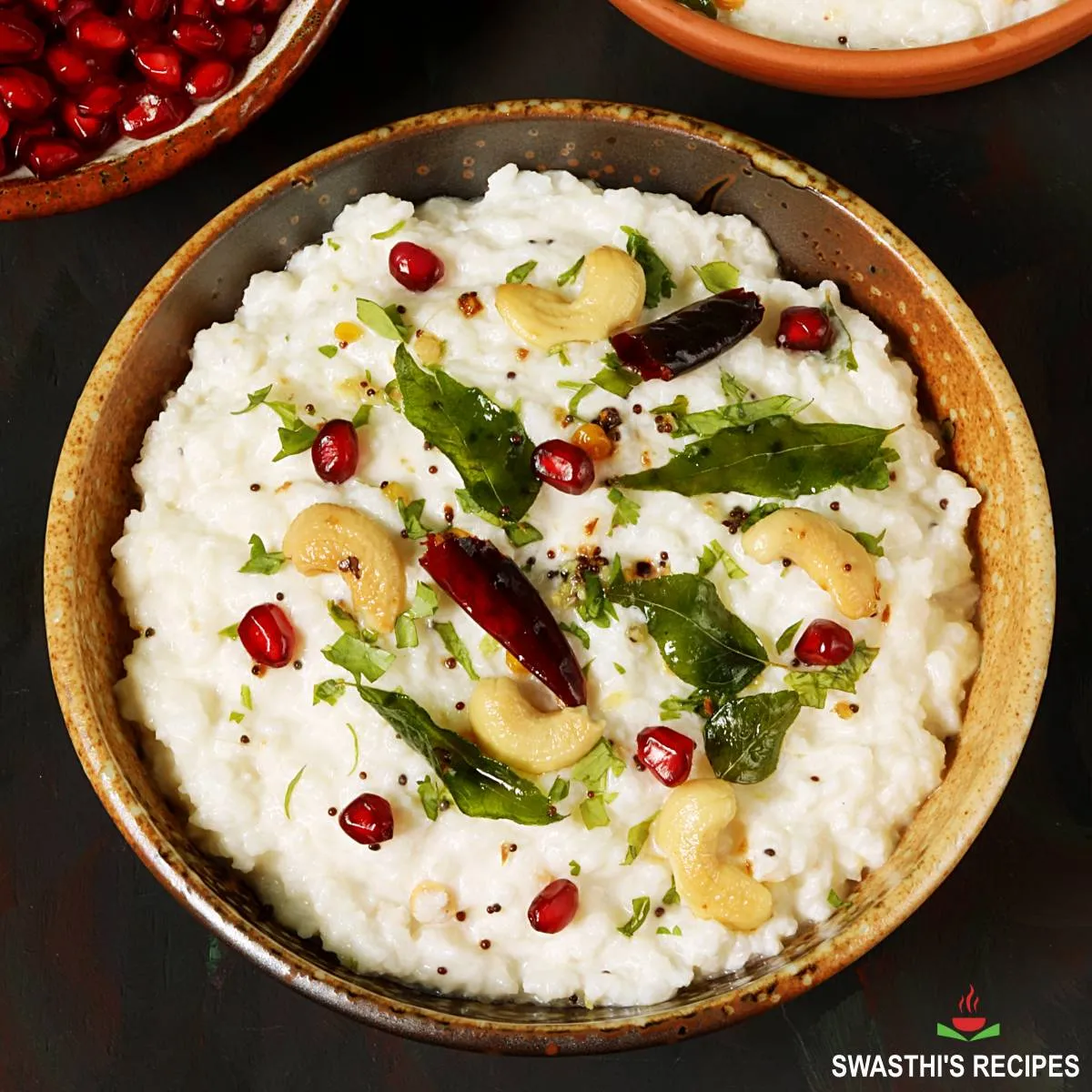
Pro Tips
1. Always use fresh cooked & cooled rice. Avoid using stale or leftover rice either from the fridge or cooked on the previous day. It is very unhealthy to eat such rice as it contains bacteria.
2. For healthier whole grain option, use brown rice or any whole grains mixed with regular rice. You can use even millets, steel cut oats, rolled oats, or even broken wheat to make this dish.
3. Make sure the grains are soft cooked and mashed well before adding the curd to it. The rice turns hard when curd is added to it without mashing well.
4. Do not add cold yogurt to hot rice as the curd may coagulate. According to Ayurveda adding cold curd to hot rice causes vata dosha & can lead to imbalances in the body. So ensure the rice is fully cooled before mixing with curd.
Benefits
1. Curd rice is considered to be a super food by many south Indians as it easily fulfills the daily nutritional requirements of the body. As curd is high in calcium, protein & other nutrients it is consumed regularly.
2. Traditionally curdrice was consumed regularly during summers to prevent sunstroke & beat the summer heat. Yogurt or curd is considered as a natural coolant & brings down the body temperature.
3. Eating this with raw onions & cucumbers helps to bring down the body heat and improves the digestion.
4. It is also believed that seasoning the thayir sadam with oil, ginger, chilli & spices nullifies the cooling nature of the curd.
So traditionally it was tempered during monsoons & winters. The tempering is avoided and served just with raw onions & cucumbers during summer.
Photo Guide
How to Make Curd Rice (Stepwise photos)
Preparation
1. Add half cup rice to a pressure cooker or a bowl. You can use only white rice. I prefer to use matta rice / brown rice and white rice in equal proportions. This is one good way to include brown rice in the diet.
Using all brown rice also yields good curd rice. You can even add a handful of millets or replace brown rice with millets or even with quinoa.
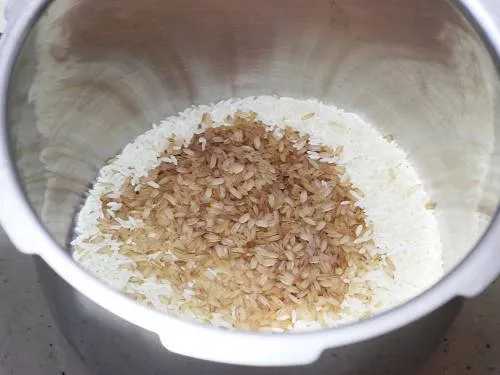
2. Wash the rice a few times and drain the water completely. I usually soak for about 20 to 30 minutes. Pour 1 ½ cups fresh water and ½ teaspoon salt or as needed.
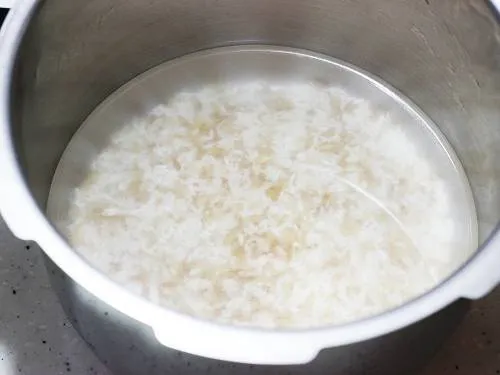
3. I cook the rice directly in the pressure cooker on a medium heat for 1 to 2 whistles. If you are cooking in a bowl pressure cook on a medium flame for 3 whistles. This may vary depending on the brand of cooker you own. If cooking in a Instant pot, pour 1 cup water to the steel insert. Place the bowl inside and pressure cook for 10 mins. We need to soft cook the rice.
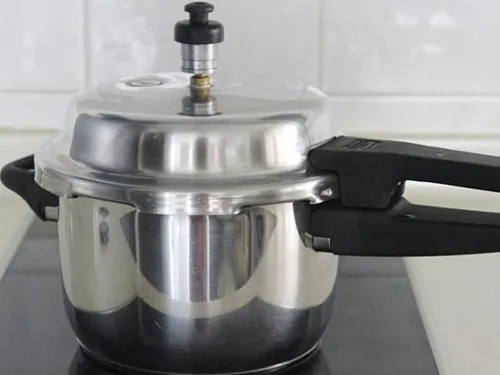
Prepare cooked Rice
4. When the pressure releases naturally, mash the rice well. Many people prefer to mash it well to make it creamy. If you do not mash the rice, it will turn hard after adding curd.
Optional Tip: If you are making this to serve later – say after few hours, then pour ¼ cup preboiled milk to the mashed rice. This keeps your curd rice fresh without becoming sour. Don’t worry you won’t get the smell of milk at all as the milk becomes curd in an hour or so.
Cool the rice completely. Adding curd to hot rice will coagulate the curd and separate whey. So cool it completely.
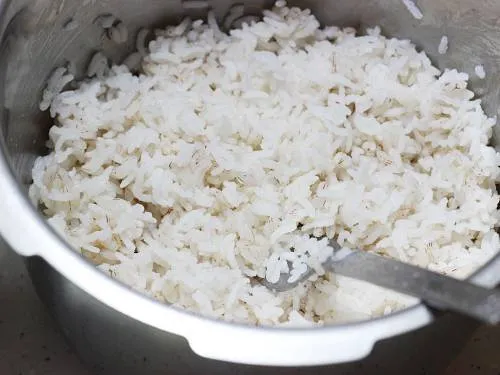
5. Add 1 cup fresh curd to the rice. Mix until just combined. Add more or less curd to bring the yogurt rice to consistency. I add another half cup while mixing. If you are using Greek yogurt or yogurt made with toned milk or buffalo milk, you can add some yogurt whey or water as it will be too thick.
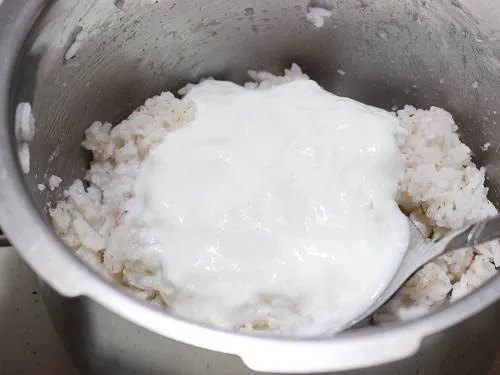
Temper Yogurt Rice
6. Heat 1 teaspoon oil in a pan. Add half teaspoon mustard, half teaspoon cumin (optional), 8 cashews, 1 teaspoon chana dal, 1 teaspoon urad dal & 1 broken dried red chilli. Fry them until the dal turns golden. Then add the 1 chopped green chilli, curry leaves & half teaspoon grated ginger. The curry leaves will turn crisp then add hing.
Optional for softer lentils – Pour 2 to 3 tablespoons water to cook down the lentils, until slightly soft. If the lentils are hard, add a bit more water & cook until they soften to your liking.
Turn off the stove (If using grated bottle gourd, add it to the pan and saute until the raw flavor is gone.)
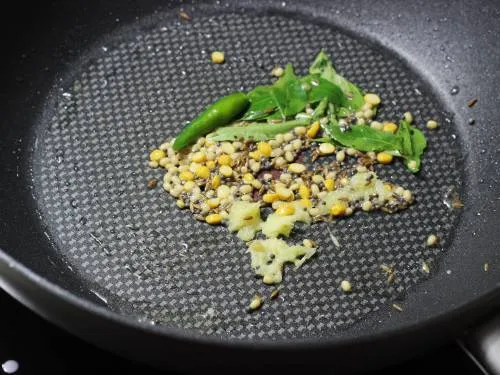
7. Add carrots and coriander leaves if using. Then pour the tempering over the curd rice. Stir well. Taste test and add more salt if required.
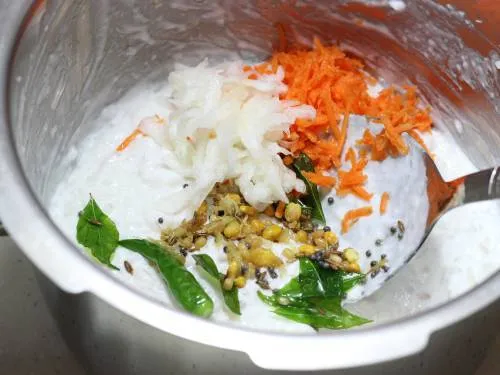
Serve curd rice with pickle, pappad, podi. A vegetable salad also goes well with this. You can top the rice with pomegranate seeds & roasted cashews.
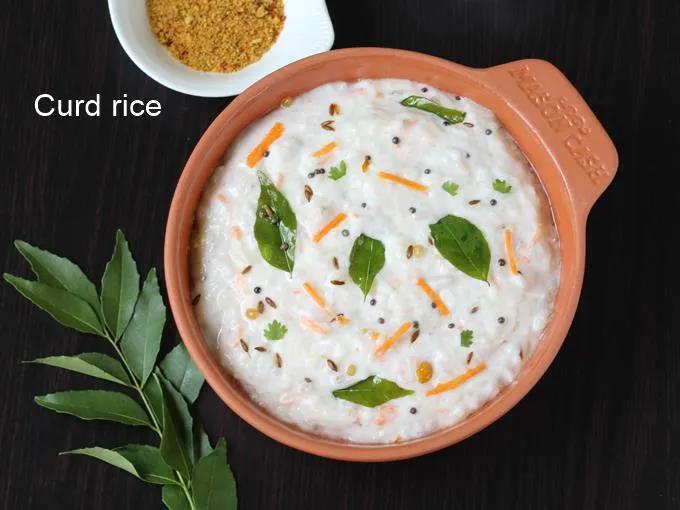
Faqs
1. How to prevent whey getting separated in curd rice or thayir sadam?
Most often when thayir sadam is packed in box after a few hours whey separates and the rice looks very unpleasant. Here are the tips you can follow to avoid that
- Most often whey separates if the hot rice is mixed with cold curd. so add curd only when the rice is cooled completely.
- Follow this step if you are making thayir sadam ahead of time and packing it for office or school box. Mash the rice well when it is still hot. Pour milk little by little to the hot rice and mash until all the milk has been absorbed.
- Then add curd & mix. Do not add hot tempering to yogurt rice or thayir sadam.
2. How to avoid curd rice from turning sour?
Curd rice turns sour during summer if you make it ahead. So adding some milk to the rice will prevent the curd from turning sour. You don’t need to refrigerate. The tempering with ginger, oil & spices will keep it fresh for a couple of hours.

3. Can you feed this to babies & toddlers?
Most south Indian mothers feed their babies yogurt & rice after 9 months. Just puree the rice & yogurt together in a blender. You can serve this as a breakfast or lunch for 2 to 3 times a week. Avoid during monsoons and winters. This is best during summers. Please consult your doctor before you introduce.
If you have a toddler who loves yogurt, you can feed this 4 to 5 times in a week. Grate some veggies like carrots & cucumber over the rice. You can also sprinkle some podi or stir fried veggies.
For more simple south Indian rice recipes, you can check
Tomato rice
Lemon rice
Ven pongal
Sweet pongal
Coconut rice
Related Recipes
Recipe Card
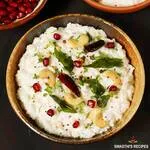
Curd Rice Recipe
For best results follow the step-by-step photos above the recipe card
Ingredients (US cup = 240ml )
- ½ cup rice (or ¼ cup white rice ¼ cup brown rice or millets)
- 1½ cup water
- 1 to 1½ cup curd (yogurt) (or more)
- salt as needed
veggies (optional)
- 2 tablespoon carrot grated
- 2 tablespoon cucumber grated (or bottle gourd, read notes)
- 1 teaspoon coriander leaves finely chopped (optional)
To temper curd rice
- 1 teaspoon oil
- ½ teaspoon mustard seeds
- ½ teaspoon cumin seeds (jeera) (optional)
- ¾ to 1 teaspoon chana dal (optional)
- ¾ to 1 teaspoon urad dal (optional)
- 1 dried red chilli broken
- 1 sprig curry leaves
- 1 pinch hing (asafoetida)
- ½ teaspoon ginger minced or crushed
- 1 green chili slit or chopped (optional)
- 6 to 8 roasted cashews split or chopped (optional)
Instructions
Preparation
- Add rice to a bowl and rinse it well a few times. Then pour 1½ cups water and ½ teaspoon salt. Keep it in a pressure cooker. Pressure cook rice for 3 whistles until soft. You can also cook the rice directly in the cooker for 2 whistles.
- When the pressure releases, remove the rice & mash it lightly. You can also fluff up & use if you do not like mushy rice. If you prefer to use milk, refer my notes below. Cool it completely.
- Add curd to cooled rice. Mix well until combined. If you have cooked the rice without salt, then add it now.
- Stir in coriander leaves, grated carrots and cucumbers (not gourd) to the curd rice. Taste the curd rice & add more salt if needed.
How to make Curd Rice
- Heat oil in a pan. Then add cumin & mustard. When they begin to splutter, add red chilli, chana dal, urad dal & cashews if using. Fry until the dal turns golden.
- Add ginger, green chili and curry leaves. When the curry leaves turn crisp, add hing.
- Optional to soften the lentils – pour 2 to 3 tablespoons water to cook down the lentils, until slightly soft. If the lentils are hard, add a bit more water & cook until they soften to your liking.
- Pour the tempering over the curd rice and mix. South Indian style curd rice is ready.
- Garnish with pomegranate seeds.
Notes
- We don’t want to cook the lentils until completely soft. They are supposed to be slightly crunchy and have a bite to them. If you don’t like that, simply leave out the lentils in the recipe.
- Alternately you may soak the lentils in hot water for 30 mins, drain and fry them in the tempering. But this won’t impart the nutty aroma that we want in the tempering.
- You can replace white rice with brown rice, steel cut oats, rolled oats or millets. If using brown rice, soak it well for a few hours before cooking.
- You can also use ¼ cup hot milk. Pour the hot milk to the hot mashed rice and mix it. You won’t smell the milk in the curd rice at all if you serve it after few hours as the milk becomes curd within this time.
- Milk also prevents the curd rice from turning sour even when kept for long hours.
- If you want to use bottle gourd, add the grated bottle gourd to the tempering and cook until it loses the raw flavor.
Video
NUTRITION INFO (estimation only)
© Swasthi’s Recipes
Curd rice recipe first published in March 2015. Updated in February 2022.
About Swasthi
I’m Swasthi Shreekanth, the recipe developer, food photographer & food writer behind Swasthi’s Recipes. My aim is to help you cook great Indian food with my time-tested recipes. After 2 decades of experience in practical Indian cooking I started this blog to help people cook better & more often at home. Whether you are a novice or an experienced cook I am sure Swasthi’s Recipes will assist you to enhance your cooking skills. More about me
Follow Swasthi’s Recipes


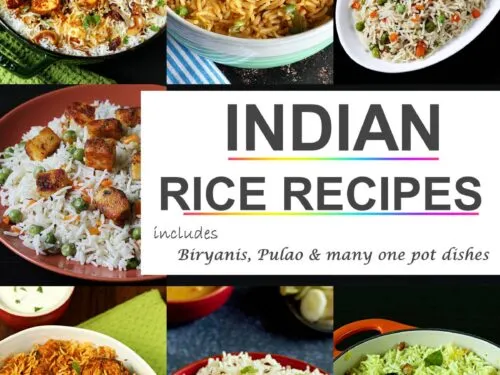
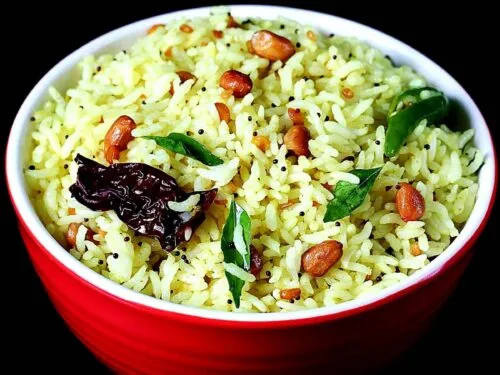
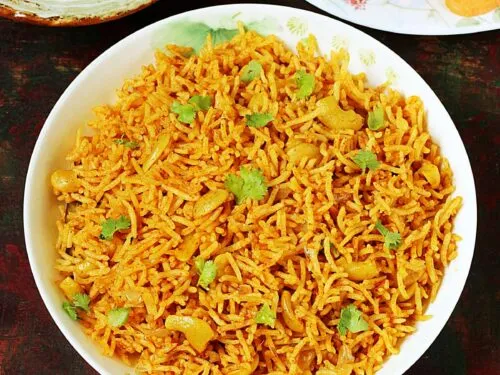
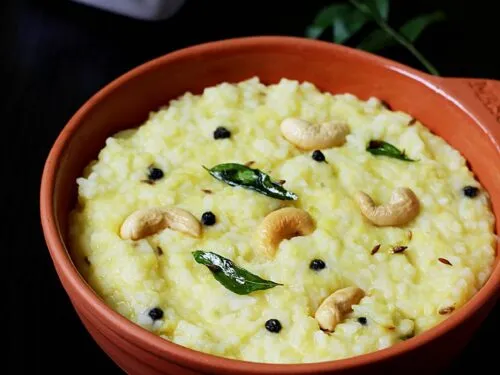
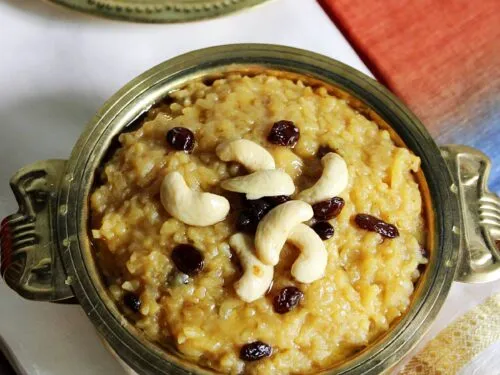
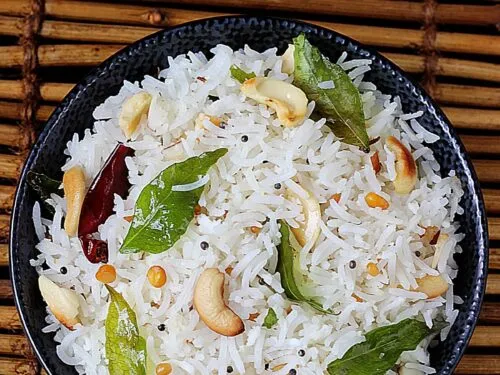
Comments
Simple easy for all.
Thank you
Wonderful
Your recipes are amazing! I religiously follow them 🙂
For years am following your recipes.. hi 👋!!
Made multiple times.
Perfect recipe
Thanks
This is the third time I made this curd rice and it is delicious. I omitted the lentils this time because the first time they were hard, despite cooking them in little water. Thank you for the recipe.
Made this recipe and it was delicious! However I am not sure if it is intentional or accidental. The dal were still hard after cooking them. Did I miss a step or mess it up? Thank you!
Hi Beth,
Yes the lentils remain hard and soften when rested with the yogurt rice. Traditionally they are kept crunchy intentionally. If you want you may soak for 30 mins in hot water, drain and use in the tempering. Soaked lentils won’t impart a roasted flavor. There is another way where you can cook the tempering with a few tablespoons of water, this way the lentils soften a bit. I will update it in the post so you can try it next time. Hope this helps
Amazing recipe. Thank you :))?
Very nice ?
Very useful & precise recipes. Thanks for your sharing.
Nice
Ok
Good
I visited a temple in Mysore India a few years ago. I was amazed at the curd rice and puliyogare that was served there. I asked a lady and noted down the names of the dishes. Last week while I was cleaning I found my dairy in which I had jotted down about the curd rice and puliyogare. Looked online and found your recipes. I made this delicious curd rice and can’t believe I made it. I did not have curry leaves so it was just the fresh cilantro. But it tasted amazing and brought back my memories of enjoying curd rice there. Thank you I’m yet to try your puliyogare.
Maria, Visiting a temple and enjoying the food there is a great experience. I’m glad you got a chance to do so. Thank you for trying my curd rice recipe. Happy you like it. Hope you enjoy the puliyogare too.
Thank you Swasthi for the yummy recipes. To make curd rice with korralu do you soak them first?
Yes I soak them for a minimum of 4 to 6 hours and cook with 1:3 ratio (korralu:water)
Hi
I love your website and recipes
Can I know if matta rice is the same as parboiled rice?
Can parboiled rice be used for rice items like bhath or pulav?
Thank you
Hi Vikram,
Thank you. Matta rice is a kind of parboilied rice grown in Kerala but available all over the world. It has more bran and higher nutrients. Yes parboiled rice can be used for bhath and pulav recipes but need to adjust the amount of water. Aged parboiled is good for recipes like pulao etc where you want to keep the rice grainy. Hope this helps
Thanks for inspiring me to cook. I used matta rice & made this curd rice. Turned out awesome & no one could find out the brown rice.
Yes Girija you won’t know there is brown rice. You can also use other grains like millets, steel cut oats, rolled oats and even dalia. Thank you for trying.
Swasthi, Thank you for the amazing recipes. I have been following your blog for 3 years now and everything from here turns out so good. We make this curd rice to carry in our office lunch boxes. I would like to use milk from now onwards. Can you tell me the difference between using milk to cook the rice vs adding milk to the cooked rice. Our curd rice is kind of dry by noon. So want to start adding milk. Is that going to help. TIA
Hi Yamini,
Sorry couldn’t reply you earlier. Thanks for following the blog and trying out recipes. Actually we add milk after cooking rice to avoid curd turning sour, especially when we make this ahead or serve later. Your curd rice is dry may be because you are using thick yogurt like Greek yogurt. Using homemade yogurt (with whey) should resolve this issue. Also try adding hot milk to the hot rice and cool down completely before mixing the yogurt. This will prevent the dryness. Hope this helps you.
Thank you. A new cook here! I made this curd rice for the first time and it turned out delicious. Thanks for boosting some confidence in me.
Glad to know Janaki.
Thanks for sharing how it turned out.
Hello, do you soak/boil the dals before adding to oil ?
Hi Karl,
No I don’t soak. They will turn softer when mixed with the yogurt rice. If you want you may soak for 30 mins in hot water, drain and use. Soaked lentils won’t impart a roasted flavor.
Very nice, simple recipe. Can you please give useful tips to make and store curd rice to use during long travel journey, 24 hrs travelling. Pl help asap
Hi Krishna,
Cooked rice should be consumed within 2 hours or refrigerated to avoid bacteria and toxins. Try carrying foods like roti, bhakri, thepla or plain parathas with some pickle and podi.